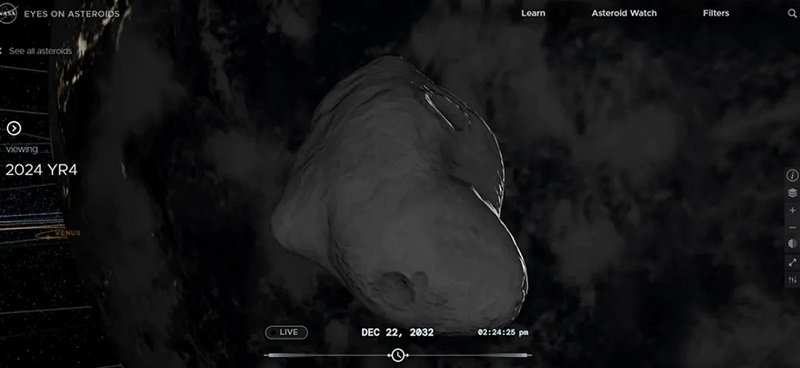In 2032 an asteroid may hit the Earth: astronomers have discovered a dangerous object in space

At the end of December 2024, astronomers discovered an asteroid, which was designated 2024 YR4.
The first observations of this space object showed that it poses a potential threat to Earth.
Here's What We Know
Astronomers have calculated the trajectory of the asteroid and concluded that 2024 YR4 with a probability of 1.2% could collide with the Earth on 22 December 2032 - that's why it took the top line in the list of risks of the European Space Agency (ESA). Although the percentage seems extremely small - it is one of the highest probabilities of an asteroid colliding with Earth in the history of space observation.

Modelling of the appearance of asteroid 2024 YR4. Source: NASA
If it happens, a rock measuring between 40 and 100 metres will fall in the vicinity of South America, Africa or the Atlantic Ocean. This event will cause serious local destruction, but will not lead to a world cataclysm (the fate of the dinosaurs this time mankind is not threatened).
Scientists continue to closely monitor the asteroid and urge people not to panic, as it is necessary to conduct a number of additional studies to correctly assess all the risks. In 2028, asteroid 2024 YR4 will approach Earth at a very close distance by cosmic standards - 106,000 kilometres. This will be the best opportunity to study the celestial rock, clarify its size, composition and mass.
Amateur astronomer Tony Dunn showed a computer model of the motion of asteroid 2024 YR4 on 22 December 2032:
Recently-discovered #asteroid 2024 YR4 may make a very close approach to Earth in 8 years. It is thought to be 40-100 metres wide. Uncertainty is still high and more and more observations are needed confirm this. pic.twitter.com/u8PvZg3jaw
- Tony Dunn (@tony873004) January 28, 2025
Source: Space